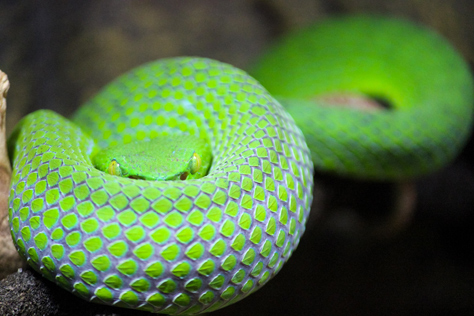
Green pit viper (Trimeresurus albolabris) on display inside the Gomek Forever exhibit.
999 Anastasia Boulevard, St. Augustine, Florida: 27 May 2013
part of the St. Augustine Alligator Farm Zoological Park album

Green pit viper (Trimeresurus albolabris) on display inside the Gomek Forever exhibit.
999 Anastasia Boulevard, St. Augustine, Florida: 27 May 2013
part of the St. Augustine Alligator Farm Zoological Park album
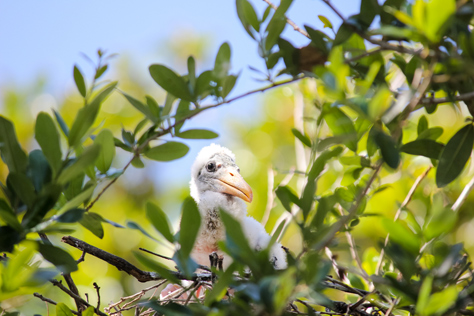
Wood Stork (Mycteria americana) chick in its rookery nest.
999 Anastasia Boulevard, St. Augustine, Florida: 27 May 2013
part of the St. Augustine Alligator Farm Zoological Park album
A haven for great egrets, snowy egrets, cattle egrets, tricolored herons, green herons, little blue herons, wood storks and roseate spoonbills, the St. Augustine Alligator Farm Zoological Park rookery is an amazing place to observe and photograph gregarious wading birds roosting and raising their young.
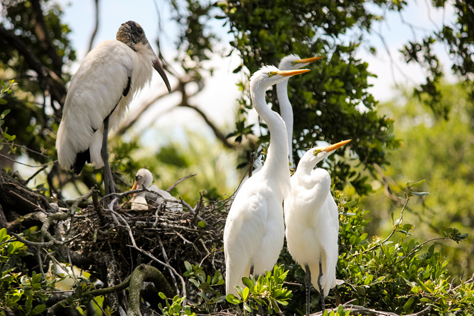
Although it may seem strange that 736 adults would build 463 nests to raise their 601 chicks (2013 count) above a swamp filled with hundreds of alligators, the birds choose this place knowing that they are safe from tree-climbing predators.
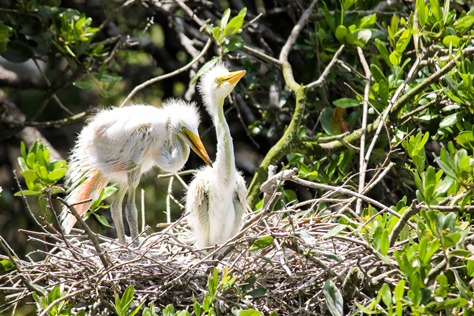
A boardwalk winds through the rookery swamp providing incredible views of the adult birds, chicks, eggs and nests at close range. Most sections of the wooden walkway border trees, providing an intimate perspective not usually available.

The zoo features many exhibits with exotic and in some cases endangered species — participating in the Species Survival Plan conservation project and conducting biological research — but I was most captivated by the rookery.

Based on the typical schedule, activity at the rookery has already begun for this year's season. From late April to early May, things usually get the most chaotic with loud, overlapping vocalizations and loads of chicks from every species hatched. This was my general experience on 27 May 2013.
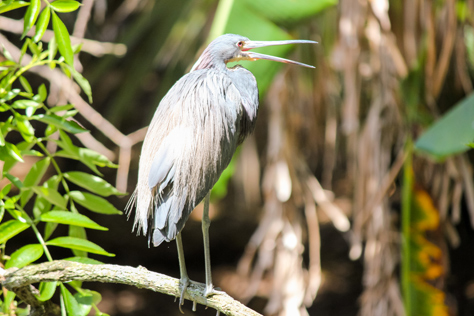
First established in 1893 as the St. Augustine Alligator Farm at South Beach, the current location was built in 1920 after two fires within four months destroyed the original. I really enjoyed my visit and shot 721 photographs plus nine videos. Suffice it to say, more images from this shoot will be developed hereafter.
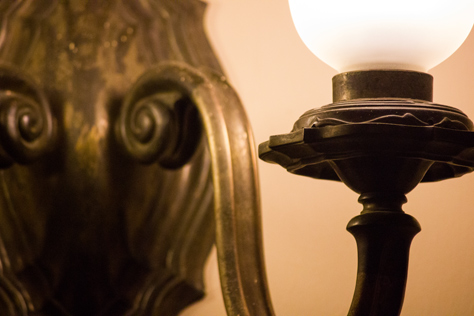
Wall-mounted lighting fixture in the portico with three marble busts outside the Old Supreme Court Chamber on 1F in the north wing of the United States Capitol (1811/1866).
First Street SE, Washington, District of Columbia: 02 February 2014
part of the United States Capitol album
Outside and across the ground floor corridor from the Old Supreme Court Chamber in the Capitol, there is a portico with three marble busts of foreign-born military figures on display.
Kazimierz Michał Władysław Wiktor Pułaski (1745–1779) of Warsaw, Polish-Lithuanian Commonwealth was a nobleman and military commander who fought against Russian domination in his country before emigrating to the United States to fight and die in the American Revolutionary War.
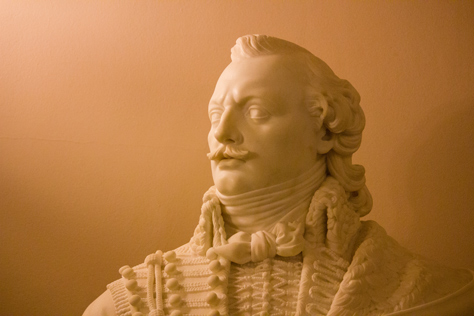
Giuseppe Garibaldi (1807–1882) of Nice, France was a sailor, merchant captain, mercenary fighter and navy officer who participated in a mutiny against the Kingdom of Piedmont-Sardinia, engaged in freelance warfare in Brazil and Uruguay and later became an acclaimed military leader in Italy.
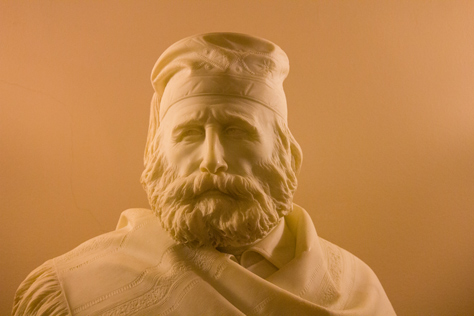
Tadeusz Andrzej Bonawentura Kościuszko (1746–1817) of Mereczowszczyzna, Polish-Lithuanian Commonwealth was a traveler and student who came to the United States in 1776 to fight and provide key strategies, earning him a rank of brigadier general before returning to his county to fight the Russians.
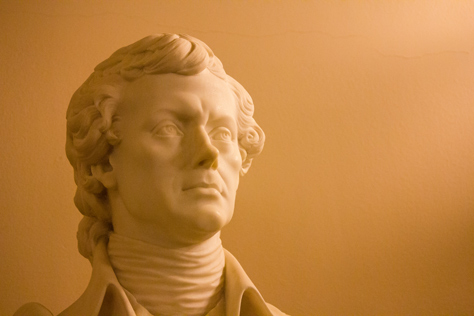
In celebration of what would have been Pulaski's 267th birthday, the Poles in America Foundation with congressional support from Representative Dan Lipinski (D-IL) conducted a wreath laying ceremony at the bust in 2012. Uniformed members of the now non-military Pulaski Cadets (1833) were also in attendance.
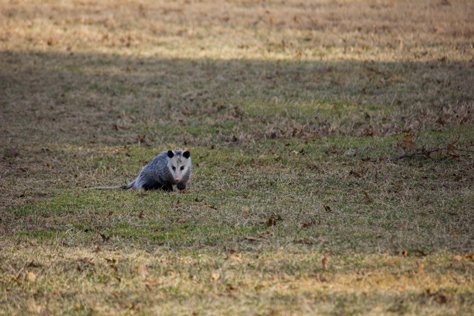
Virginia opossum (Didelphis virginiana) crossing the lawn just west of the United States Capitol (1811/1866) House Chamber in broad daylight.
Near Southwest Drive at First Street SW, Washington, District of Columbia: 02 February 2014
part of the United States Capitol album
As Erik and I walked the paths around the United States Capitol just west of the House Chamber, something in the grass between us and the building caught my eye. Moving closer down and to the edge of the sidewalk, where a fence keeps people off the grass in this area, we could see that it was a Virginia opossum.
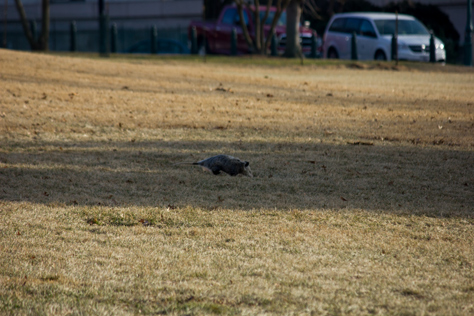
The only marsupial in North America north of Mexico, the Virginia or North American opossum is generally nocturnal. While certainly not uncommon in urban areas where greater opportunities for food exist, I was a bit surprised to see this opossum on the grounds of the Capitol in the middle of the afternoon.
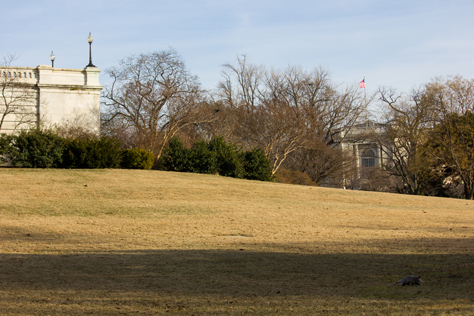
We watched it make its way across the lawn, moving away from the building and toward a nearby tree. It paused for a moment to check us out but then continued on as before. A woman walking by stopped to look and asked us what kind of animal it was. I got the impression that she had never seen one before and was possibly a tourist from abroad.
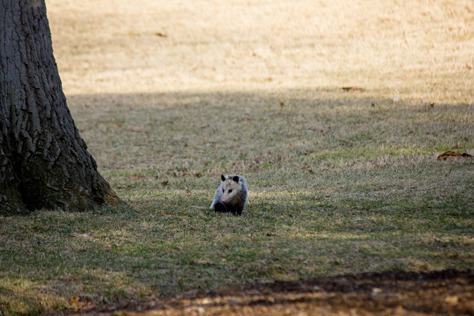
The opossum stopped when it got to the tree it was seemingly walking toward. I expected it to climb the tree at this point but it just sat there. Unfortunately, we were on a tight schedule to rendezvous with a Capitol staffer and could not hang out to watch the opossum further and see what it did next.
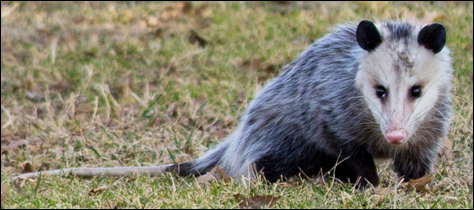
Due to the success of Morris Michtom and his stuffed bear named after President Theodore "Teddy" Roosevelt, another toy company decided to try and recreate the same magic in 1908. Their "Billy Possum" plush toy design was instead after William Howard Taft, Roosevelt's likely successor.
Although Billy Possum does appear in several political cartoons and Taft was indeed elected to office, the opossum toy failed to capture the public's attention as the teddy bear had only years earlier.
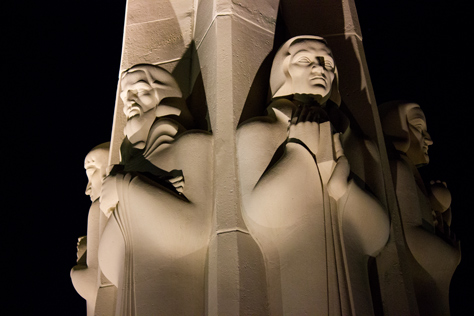
The concrete sculpture Astronomers Monument (1934) celebrating Hipparchus, Copernicus, Galileo, Kepler, Newton and Herschel in the front lawn of the Griffith Observatory (1935).
2800 East Observatory Avenue, Los Angeles, California: 22 August 2013
part of the Griffith Observatory album